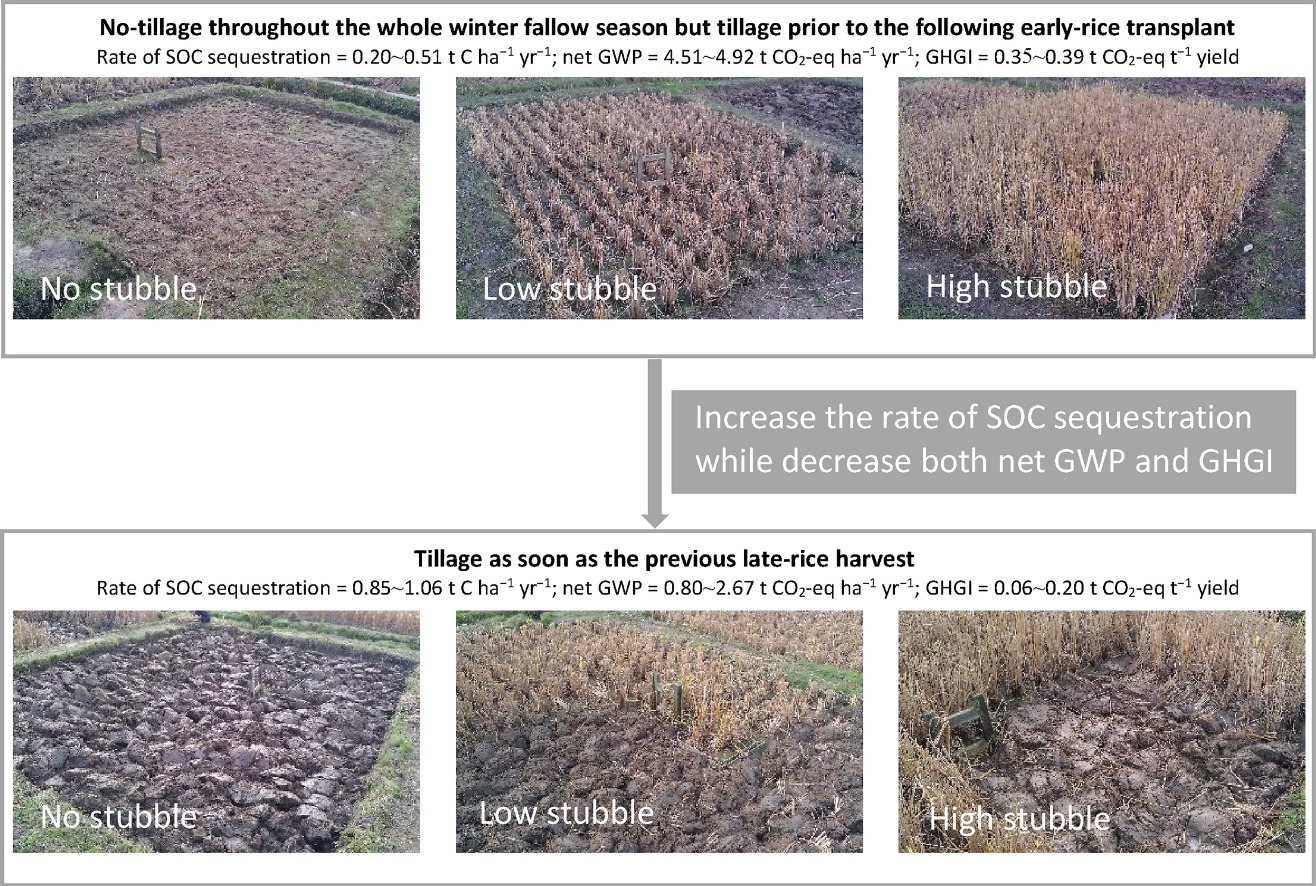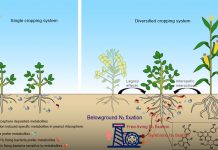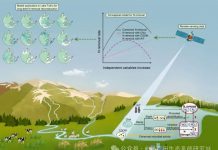Yang YT, Huang Q, Yu HY, Song KF, Ma J, Xu H, Zhang GB. Winter tillage with the incorporation of stubble reduces the net global warming potential and greenhouse gas intensity of double-cropping rice fields. Soil & Tillage Research, 2018, 183: 19-27
Abstract
Tillage with the incorporation of stubble is a common practice in rice cultivation, but its effect on the net global warming potential (GWP) and greenhouse gas intensity (GHGI) is poorly documented. A three-year field experiment in a double-cropping rice system was conducted to investigate the rate of sequestration of soil organic carbon, CH4 and N2O emissions, the net GWP and the GHGI. Two timings of tillage with three amounts of stubble incorporation were prepared: winter tillage (tillage after the harvest of late rice) and spring tillage (tillage before the transplantation of early rice) with no (0 t ha−1), low (3.5 t ha−1) and high (5.2 t ha−1) amounts of stubble incorporation. The results showed that the rates of sequestration of soil organic carbon with the incorporation of stubble were 0.85–1.06 t C ha−1 yr−1 for winter tillage, 67–429% higher than for spring tillage. Winter tillage significantly increased CH4 and N2O emissions in the winter fallow season relative to spring tillage, whereas it tended to decrease both emissions in the early and late rice seasons, thus playing a small part in the annual emissions. The total CH4 and N2O emissions averaged 106.5–198.2 kg ha−1 yr−1 and 114.4–229.4 g N ha−1 yr−1, respectively. Significant decreases in the net GWP (46–82%) and GHGI (49–84%) were observed when changing the tillage practices with the incorporation of stubble from spring to winter. Compared with high levels of stubble incorporation, winter tillage with low levels of stubble incorporation significantly decreased both the net GWP and the GHGI. The total grain yield was 13.0–13.3 t ha−1 yr−1 for winter tillage, 3–5% higher than for spring tillage. These findings suggest that tillage with the incorporation of stubble in the winter fallow season, particularly with 3.5 t ha−1 stubble, is an effective strategy to mitigate the net GWP and GHGI while maintaining a high grain yield in the double-cropping rice system.








